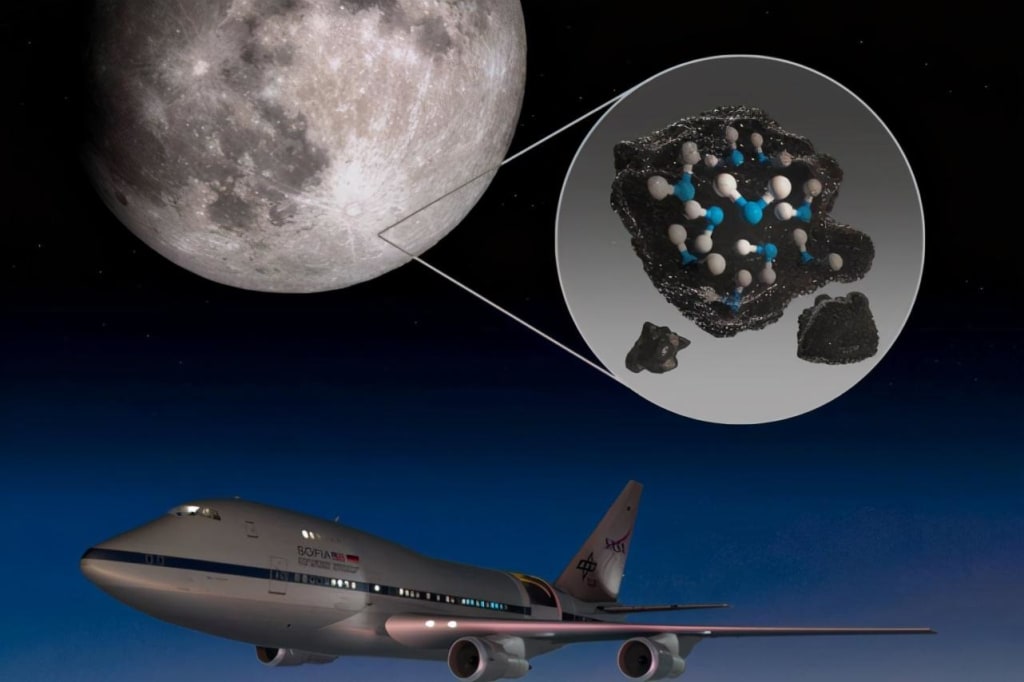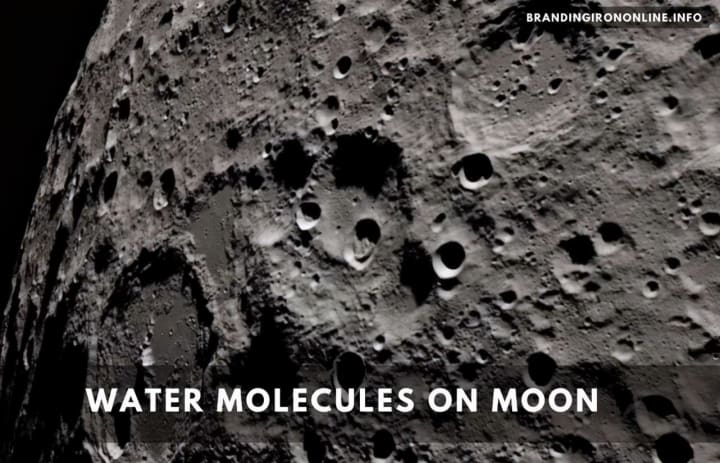The presence of water in sunlit areas of the lunar surface
It means that water is spread all over the surface of the Moon not only in the cold areas where it was previously distributed.

Previously, researchers discovered the presence of hydrogen on the lunar surface but were unsure whether it was in the form of water (H20) or the relatively recent hydroxide group (OH).
NASA's discovery on the moon: NASA has found water on the lunar surface! The announcement on Monday is truly unprecedented, as NASA has confirmed that the Moon's Stratospheric Infrared Observatory (called SOFIA) has found water in its sunlit regions, meaning that water may be spread across the lunar surface and not just in areas previously thought to be overcast. SOFIA has detected the presence of water molecules in Clausius Crater This crater is located on the surface of the Moon. This crater, located in the southern hemisphere of the Moon, is one of the largest craters visible on Earth.
Previously, researchers found the presence of hydrogen on the lunar surface but were unsure whether it was in the form of water (HO) or a relatively close hydroxide group (-OH). According to data from this site, the concentration of water per cubic meter on the lunar surface is 100 parts per million to 4,112 parts per million, roughly equivalent to a twelve-ounce bottle of water. In simple terms, the Sahara Desert contains one hundred times more water than SOFIA has detected on the lunar surface. However, this discovery remains critical because it raises questions about the production and maintenance of water.
With this discovery, questions are being raised about the resources needed for deep space exploration, said Paul Certs, director of the Astrophysics Division of NASA's Science Mission Council.

Why water is so important in space
In addition to being important for research and an effective way to explore more information about space, the presence of water in space is key to the existence of life, and its presence is even more valuable in the deeper exploration of the universe. At this stage, astronauts must still carry all resources, including food and water, to sustain life while exploring outer space. If water can be found in space that humans can use, astronauts will be able to carry more valuable equipment to outer space by carrying only a small amount of water during their missions.
NASA is planning to send the first woman and a man to the lunar surface in 2024 as part of Project Artemis, and it hopes to find more water on the moon for human use before the mission is carried out. They hope to establish a permanent base for human survival on the Moon by the end of this century.
Previous research in this area
NASA says the results given by SOFIA are based on previous studies in this area. in 1969, when the Apollo astronauts returned to Earth from the Moon, the surface was considered completely dry. In subsequent missions, different discoveries followed, and NASA's Lunar Crater Observation and Remote Sensing Satellite confirmed the presence of ice at the Moon's poles, which are always in shadow. Meanwhile, many space probes, such as NASA and ESE's Cassini and the Indian Space Research Organization's (ISO's) Chandra-1, discovered the presence of hydration in sunny regions. However, neither of these missions confirmed the presence of hydration due to HO or OHˉ.
Why is this finding so surprising?
Kathy Hornblower, the lead author of the study published in the journal Nature Astronomy, says that water in sunlit regions on the moon should have been lost to space because there is no thick atmosphere like that present on Earth, but it does exist. "That means something caused the water to be created and something trapped the water there," she said.
There could be many forces causing water to form on the moon. According to NASA's elaboration, some of them are rainwater-carrying micrometeorites that landed on the moon's surface, causing water to be deposited there. The agency also considered a "two-step" possibility for the presence and persistence of water on the lunar surface - the solar wind could have allowed hydrogen to reach the lunar surface and chemically react with oxygen-containing minerals in the soil, producing hydroxide groups. At the same time, radiation from micrometeorite bombardment can convert hydroxide groups into water.
The storage of water on the lunar surface is also an interesting topic. NASA says that due to the impact of micrometeorites, tiny bead-like structures formed by high temperatures may exist in the soil and water may be trapped in these structures. On the other hand, the water could be shielded from sunlight because it is hidden between lunar soil particles. The second possibility would make water easier to extract than water trapped in bead-like structures, NASA said.
Another study by scientists published in the same issue of Nature Astronomy concluded that with the help of models and data from NASA's Lunar Reconnaissance Orbiter, more water than previously expected could be stored in small shadows trapped on the moon's surface. In these shadows, the scientists said, the temperature stays below zero.
About the Creator
Copperchaleu
The most charming woman I've ever met.






Comments
There are no comments for this story
Be the first to respond and start the conversation.